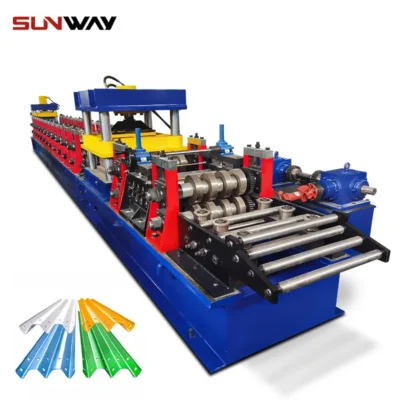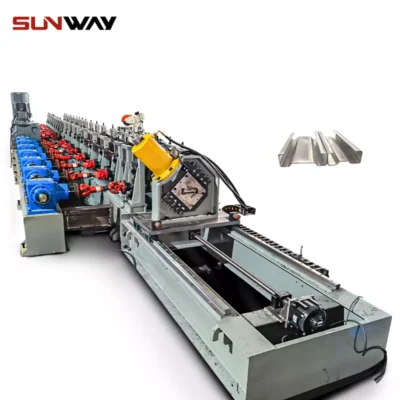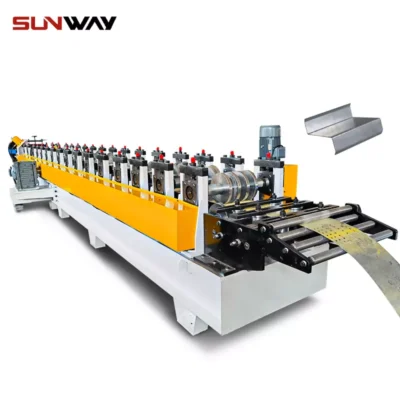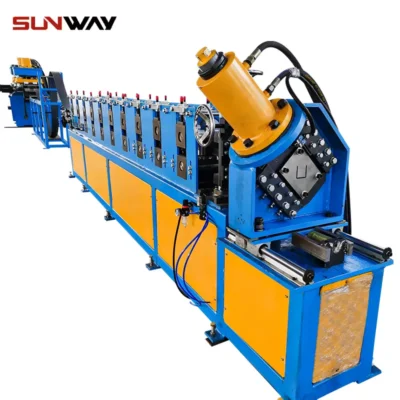Overview of Galvanised Metal Roofing
Galvanised metal roofing is a durable, cost-effective, and versatile roofing solution that’s popular for both residential and commercial buildings. By coating metal sheets with a layer of zinc, galvanisation enhances their resistance to corrosion and rust, making them ideal for various environments. This guide delves deep into the intricacies of galvanised metal roofing, from its types and components to its installation and maintenance. Whether you’re a homeowner considering a new roof or an architect specifying materials for a large project, this article will give you all the information you need to make an informed decision.
What is Galvanised Metal Roofing?
Galvanised metal roofing involves steel or iron sheets that are coated with zinc through a galvanisation process, which protects them from rusting. The zinc acts as a sacrificial layer; even if the coating is scratched, the exposed steel will still be protected by the surrounding zinc, which corrodes first.

Corrugated Iron Sheets: A Popular Choice
Corrugated iron sheets are a common type of galvanised roofing. These sheets have a wavy surface, which not only adds to their strength but also helps in water runoff. The corrugations increase the bending strength of the sheet, which prevents it from sagging under its own weight or under the weight of snow, for example.
Key Features of Corrugated Galvanised Sheets:
- Durability: With proper maintenance, these sheets can last decades.
- Resistance to Elements: Excellent protection against rust, especially in humid or salty environments.
- Cost-Effective: A long-term solution that offers great value for money.
- Aesthetic Appeal: Available in various finishes and styles to complement different architectural designs.
Types of Galvanised Metal Roofing
When it comes to choosing the right galvanised metal roofing, you have several options, each with its own set of advantages. Here’s a detailed guide to help you navigate through the various types available on the market.
1. Hot-Dip Galvanised Steel Roofing*
This is the most common type of galvanised roofing. In this process, steel sheets are dipped in a bath of molten zinc, creating a thick, robust layer that offers extensive corrosion protection.
Characteristics:
- Zinc Coating Thickness: Typically ranges from 20 to 50 microns.
- Best For: Industrial and commercial buildings.
- Advantages: Excellent durability and long lifespan.
- Disadvantages: Heavier than other types, making installation more challenging.
2. Electro-Galvanised Roofing
Unlike hot-dip galvanisation, electro-galvanised steel involves the application of zinc through an electroplating process, which results in a thinner coating.
Characteristics:
- Zinc Coating Thickness: Ranges from 10 to 20 microns.
- Best For: Residential homes and light commercial buildings.
- Advantages: Lightweight and easier to work with.
- Disadvantages: Less corrosion-resistant compared to hot-dip galvanised steel.
3. Galvalume Roofing
A mix of aluminum, zinc, and silicon coating, Galvalume offers superior corrosion resistance.
Characteristics:
- Zinc Content: 55% aluminum, 43.4% zinc, and 1.6% silicon.
- Best For: Coastal regions and environments with high humidity.
- Advantages: Outstanding corrosion resistance and heat reflectivity.
- Disadvantages: Slightly more expensive than other types.
4. Galfan Roofing
Galfan is a type of galvanised steel coated with a zinc-aluminum alloy that enhances its durability.
Characteristics:
- Zinc Coating Thickness: Ranges from 50 to 70 microns.
- Best For: Harsh environments, such as industrial zones.
- Advantages: Greater flexibility and better protection against corrosion.
- Disadvantages: Less common and harder to find.
5. Zincalume Roofing
Similar to Galvalume, but with a different composition, Zincalume is another high-performance roofing material.
Characteristics:
- Composition: 55% aluminum, 43.5% zinc, and 1.5% silicon.
- Best For: Areas prone to extreme weather conditions.
- Advantages: Long-lasting and resistant to cracking and peeling.
- Disadvantages: Slightly more expensive than traditional galvanised steel.
6. Corrugated Galvanised Iron (CGI) Roofing
This is a type of corrugated sheet that is galvanised for extra protection against rust.
Characteristics:
- Thickness: Available in various thicknesses, typically ranging from 0.4mm to 1.2mm.
- Best For: Agricultural buildings and rural homes.
- Advantages: Lightweight, cost-effective, and easy to install.
- Disadvantages: May not be suitable for high-wind areas.
7. Pre-Painted Galvanised Iron (PPGI) Roofing
These are galvanised steel sheets that are pre-painted to add an extra layer of protection and aesthetic appeal.
Characteristics:
- Coating: Zinc coating with a layer of paint on top.
- Best For: Residential and commercial buildings where aesthetics are important.
- Advantages: Customizable in a range of colors and finishes.
- Disadvantages: The paint layer may fade over time, requiring maintenance.
8. Tin Roofing
Often confused with galvanised steel, tin roofing is actually a thin steel sheet coated with tin. It offers unique properties that make it ideal for certain applications.
Characteristics:
- Tin Coating: Provides a soft, malleable surface.
- Best For: Decorative applications and historical buildings.
- Advantages: Lightweight and corrosion-resistant.
- Disadvantages: Less durable than zinc-coated alternatives.
9. Bonderized Steel Roofing
Bonderized steel is galvanised steel that has been treated with a phosphate coating, which makes it an ideal base for painting.
Characteristics:
- Phosphate Coating: Enhances paint adhesion and corrosion resistance.
- Best For: Applications where the roof will be painted.
- Advantages: Better paint adhesion compared to untreated galvanised steel.
- Disadvantages: Requires painting, which adds to the overall cost.
10. Alu-Zinc Roofing
A variant of Galvalume, Alu-Zinc roofing provides superior protection against the elements, especially in coastal environments.
Characteristics:
- Composition: 55% aluminum, 43.5% zinc, 1.5% silicon.
- Best For: Coastal areas and regions with high humidity.
- Advantages: High corrosion resistance and long lifespan.
- Disadvantages: Higher cost compared to traditional galvanised roofing.
Working Process of Galvanised Metal Roofing
Understanding the working process of galvanised metal roofing helps in appreciating its durability and effectiveness. The process involves several key steps:
1. Preparation of the Base Metal
The first step involves cleaning the base metal, usually steel or iron, to remove any impurities. This is crucial to ensure that the zinc coating adheres properly to the metal surface. The metal is often cleaned using a combination of acidic and alkaline solutions, followed by rinsing in water.
2. Galvanisation Process
The cleaned metal is then immersed in a bath of molten zinc, typically at a temperature of around 450°C. This process is known as hot-dip galvanisation. The zinc reacts with the metal to form a series of zinc-iron alloy layers, with a pure zinc layer on the outer surface.
3. Cooling and Inspection
After galvanisation, the metal is cooled in a quenching tank to solidify the zinc coating. The galvanised metal is then inspected for any defects or inconsistencies in the coating. Any issues are rectified before the metal is further processed.
4. Corrugation (If Required)
If the metal is to be used as corrugated roofing, it is passed through rollers that shape it into the desired corrugated pattern. This process enhances the strength and flexibility of the metal sheet.
5. Cutting and Packaging
The galvanised metal sheets are cut into the required sizes and shapes, then packaged for transport to construction sites or retail outlets.
-
 Highway Guardrail End Terminal Forming Machine
Highway Guardrail End Terminal Forming Machine -
 Highway U/C Post Roll Forming Machine
Highway U/C Post Roll Forming Machine -
 2 Waves Highway Guardrail Roll Forming Machine
2 Waves Highway Guardrail Roll Forming Machine -
 3 Waves Highway Guardrail Roll Forming Machine
3 Waves Highway Guardrail Roll Forming Machine -
 স্বয়ংক্রিয় আকার পরিবর্তনযোগ্য সিগমা Purlin রোল ফর্মিং মেশিন
স্বয়ংক্রিয় আকার পরিবর্তনযোগ্য সিগমা Purlin রোল ফর্মিং মেশিন -
 স্বয়ংক্রিয় আকার পরিবর্তনযোগ্য CZ Purlin রোল ফর্মিং মেশিন
স্বয়ংক্রিয় আকার পরিবর্তনযোগ্য CZ Purlin রোল ফর্মিং মেশিন -
 স্বয়ংক্রিয় আকার পরিবর্তনযোগ্য Z Purlin রোল তৈরির মেশিন
স্বয়ংক্রিয় আকার পরিবর্তনযোগ্য Z Purlin রোল তৈরির মেশিন -
 Auto Size Changeable C U Purlin Roll Forming Machine
Auto Size Changeable C U Purlin Roll Forming Machine -
 বৈদ্যুতিক মন্ত্রিসভা ফ্রেম রোল গঠনের মেশিন
বৈদ্যুতিক মন্ত্রিসভা ফ্রেম রোল গঠনের মেশিন
Key Components of Galvanised Metal Roofing and Their Functions
| Component | Function |
|---|---|
| Base Metal (Steel/Iron) | Provides structural strength and durability. |
| Zinc Coating | Protects against corrosion and rust. |
| Corrugation | Enhances the sheet’s strength and rigidity. |
| Fasteners | Secure the roofing sheets to the structure. |
| Sealing Tape/Strip | Ensures a watertight seal between roofing sheets. |
| Flashing | Directs water away from critical areas like valleys and edges. |
| Roof Underlayment | Provides additional protection against water infiltration. |
| Roof Vents | Allow for ventilation, preventing moisture buildup. |
| Ridge Caps | Cover the roof’s ridge to prevent water ingress. |
Machine Speed and Efficiency in Galvanised Metal Roofing Production
When it comes to producing galvanised metal roofing, machine efficiency and speed are critical factors. The machines used in the production process must be capable of maintaining high output rates while ensuring consistent quality.
| Machine Type | Speed (meters/min) | Efficiency (%) |
|---|---|---|
| রোল ফর্মিং মেশিন | 10-20 m/min | 90-95% |
| Corrugation Machine | 15-25 m/min | 85-90% |
| Cutting Machine | 8-15 m/min | 92-96% |
| Coating Line | 5-10 m/min | 80-85% |
Customized Mechanical Parameters for Galvanised Metal Roofing
Each roofing project may require different specifications depending on factors like environmental conditions, building type, and design preferences. Here are some typical customizable mechanical parameters for galvanised metal roofing:
| Parameter | Range |
|---|---|
| Thickness of Metal Sheet | 0.4mm – 1.2mm |
| Zinc Coating Thickness | 10 microns – 50 microns |
| Sheet Length | 1.5m – 12m |
| Corrugation Height | 5mm – 25mm |
| Width of Sheets | 600mm – 1250mm |
| Paint Coating (if any) | 15 microns – 25 microns |
| Tensile Strength | 250 MPa – 550 MPa |
Applications of Galvanised Metal Roofing
Galvanised metal roofing is versatile and can be used in a wide range of applications. Below are some of the most common uses:
| Application Area | Description |
|---|---|
| Residential Roofing | Commonly used in homes for its durability and aesthetic appeal. |
| Commercial Buildings | Ideal for warehouses, factories, and retail stores. |
| Agricultural Buildings | Perfect for barns, silos, and other farm structures due to its resistance to rust. |
| Industrial Zones | Used in industrial buildings where exposure to chemicals and pollutants is common. |
| Coastal Areas | Effective in coastal regions due to its superior corrosion resistance. |
| Historical Buildings | Sometimes used in restoration projects for a traditional look. |
| Temporary Structures | Used in construction for temporary shelters due to its ease of installation and removal. |
Installation, Operation, and Maintenance of Galvanised Metal Roofing
Proper installation, operation, and maintenance are crucial to the longevity and performance of galvanised metal roofing. Below is a comprehensive guide on these aspects:
Installation Guide
| Step | Description |
|---|---|
| Planning and Measurement | Measure the roof area to determine the number of sheets required. |
| Preparation of Materials | Ensure all materials, including fasteners and flashing, are ready. |
| Laying the Underlayment | Install underlayment to protect against moisture. |
| Installing the Sheets | Lay the galvanised sheets, starting from the eaves and working upwards. |
| Securing with Fasteners | Use screws or nails to secure the sheets to the roof structure. |
| Installing Flashing | Install flashing around edges, valleys, and ridges for extra protection. |
| Finishing Touches | Install ridge caps and roof vents. |
Operation and Maintenance
| Aspect | Description |
|---|---|
| Routine Inspection | Regularly inspect the roof for any signs of damage or wear. |
| Cleaning | Clean the roof to remove debris and prevent buildup of dirt and moss. |
| Repairs | Promptly repair any damages, such as leaks or loose fasteners. |
| Re-coating | If the roof is painted, consider re-coating every few years to maintain aesthetics and protection. |
Suppliers and Price Range for Galvanised Metal Roofing
When purchasing galvanised metal roofing, it’s important to choose a reliable supplier who offers competitive pricing. Below is a table detailing some of the leading suppliers and the price ranges for their products:
| Supplier | Price Range (per square meter) | Country of Origin |
|---|---|---|
| ABC Roofing | $15 – $25 | USA |
| BlueScope Steel | $20 – $30 | Australia |
| Tata Steel | $10 – $20 | ভারত |
| ArcelorMittal | $18 – $28 | Luxembourg |
| Nippon Steel | $22 – $32 | Japan |
How to Choose the Right Supplier for Galvanised Metal Roofing
Choosing the right supplier is crucial to ensure that you receive high-quality materials at a fair price. Here are some factors to consider when selecting a supplier:
1. Reputation and Reviews
Always check the reputation of the supplier. Look for online reviews and testimonials from previous customers. A supplier with a good track record is more likely to provide reliable products and services.
2. Quality of Products
Ensure that the supplier offers products that meet industry standards. Ask for product certifications and verify the quality of the materials being offered.
3. Pricing
Compare prices from different suppliers to ensure you’re getting a fair deal. However, be wary of prices that are significantly lower than the market average, as this could indicate lower quality.
4. Customer Service
Good customer service is essential, especially if you need assistance with installation or if you encounter any issues with the product. Choose a supplier who is responsive and offers support.
5. Warranty and Guarantees
Check if the supplier offers any warranties or guarantees on their products. This can provide peace of mind, knowing that you’re covered in case of any defects or issues.
6. Delivery and Logistics
Consider the supplier’s ability to deliver the materials to your location. Reliable logistics are important, especially for large orders or if you’re working on a tight schedule.
Pros and Cons of Galvanised Metal Roofing
Like any roofing material, galvanised metal roofing has its advantages and disadvantages. Here’s a detailed comparison:
| Pros | Cons |
|---|---|
| Durability: Can last for decades with proper maintenance. | Cost: Higher upfront cost compared to some other materials. |
| Corrosion Resistance: Excellent protection against rust and corrosion. | Noise: Can be noisy during rain or hail unless properly insulated. |
| Aesthetic Variety: Available in various finishes and colors. | Weight: Heavier than some other roofing options, requiring a strong structure. |
| Fire Resistance: Non-combustible, making it ideal for areas prone to wildfires. | Installation Complexity: Requires skilled labor for proper installation. |
| Energy Efficiency: Reflects heat, helping to keep buildings cool in hot climates. | Potential for Denting: Can dent under heavy impact, such as hail. |

FAQs
To help you further understand galvanised metal roofing, here are some frequently asked questions:
| Question | Answer |
|---|---|
| What is the lifespan of galvanised metal roofing? | With proper maintenance, galvanised metal roofing can last 50 years or more. |
| Is galvanised metal roofing suitable for coastal areas? | Yes, especially types like Galvalume and Zincalume, which offer superior corrosion resistance. |
| Can galvanised metal roofing be painted? | Yes, especially pre-painted variants like PPGI, or you can paint it post-installation. |
| How often should I inspect my galvanised metal roof? | It’s recommended to inspect your roof at least twice a year, and after any major weather events. |
| Is galvanised metal roofing environmentally friendly? | Yes, it’s recyclable and energy-efficient, making it an eco-friendly option. |
| Can galvanised metal roofing be installed over existing shingles? | In some cases, yes, but it’s important to check the structural integrity and consult with a professional before proceeding. |
উপসংহার
Galvanised metal roofing is a robust and versatile option for both residential and commercial buildings. Its durability, corrosion resistance, and aesthetic appeal make it a top choice for many. Whether you’re building a new home, renovating an old one, or constructing a commercial space, understanding the different types, their applications, and how to maintain them is crucial to making the right choice. With the insights provided in this guide, you’re now well-equipped to make an informed decision about galvanised metal roofing for your next project.
Frequently Asked Questions (FAQ)
1) What grade of steel and zinc coating should I choose for galvanised metal roofing in coastal areas?
- Use structural grades S250GD–S350GD (EN 10346) with metallic coatings optimized for chloride exposure. Prefer Al–Zn alloys like Galvalume/Zincalume (e.g., AZ150–AZ200) or Zn‑Al‑Mg (ZM120–ZM275) for 2–4× corrosion life versus standard Z275 in salt spray and field exposure.
2) How do I prevent cut-edge corrosion on galvanised roofing sheets?
- Specify factory edge-trimming after coating, sealed end laps, compatible neutral-cure sealants, and paint the cut edges on site with zinc-rich primers. Maintain minimum overhangs and avoid dissimilar-metal contact to prevent galvanic attack.
3) What roof pitch is recommended for corrugated galvanised sheets?
- Common minimum pitches: 3°–5° for long-span trapezoidal profiles with sealed side laps; 5°–10° for tighter corrugations. Always follow the profile manufacturer’s datasheet for runoff capacity and lap detailing.
4) Can I install solar panels on galvanised metal roofing without voiding the warranty?
- Yes, with manufacturer-approved clamps and isolators. Use stainless (A2/A4) or coated fasteners, isolation pads to prevent galvanic corrosion, and maintain drainage paths. Confirm warranty terms regarding roof penetrations and rail attachments.
5) What maintenance schedule maximizes lifespan of galvanised roofs?
- Twice-yearly inspections; annual gentle wash with low-pressure water; immediate touch-up of scratches with zinc-rich paint; debris removal from valleys/gutters; and re-sealing laps/fasteners every 8–12 years depending on climate.
2025 Industry Trends
- Shift to Zn‑Al‑Mg coatings for extended service life and down-gauging opportunities.
- Cool-roof finishes with higher solar reflectance (SR) and thermal emittance (TE) to meet stricter building-energy codes.
- PV-ready roofing: clamp-on racking systems to minimize penetrations and accelerate installs.
- EPDs and coil-traceability demanded for green building certifications (LEED v5, BREEAM).
- Fastener technology upgrades: long-life coated/self-sealing fasteners for >25-year corrosion zones.
- Insurance and resilience: greater emphasis on impact- and wind-uplift ratings (FM 4473 Class 4, UL 580/1897) due to severe weather events.
Key 2023–2025 market and performance metrics
| Metric | 2023 | 2024 | 2025 (est.) | Notes/Sources |
|---|---|---|---|---|
| Global metal roofing market value (USD bn) | 18.4 | 19.7 | 21.0 | Grand View Research; Allied Market Research |
| Share of roofs specifying Al‑Zn or Zn‑Al‑Mg vs pure Zn (%) | 38% | 44% | 51% | OEM coil sales mixes: ArcelorMittal, Nippon Steel |
| Average SR (solar reflectance) for “cool” galvanised finishes | 0.58 | 0.61 | 0.64 | CRRC ratings database trends |
| Residential adoption of clamp-on PV racking on metal roofs (%) | 22% | 28% | 34% | SEIA installer surveys; manufacturer data |
| Typical warranted life in C3–C4 environments (years) | 25–30 | 30–35 | 35–40 | EN ISO 12944 exposure classes; coating tech notes |
| Fasteners with >1,000 h SST rating usage (%) | 46% | 53% | 62% | Fastener OEMs: SFS, EJOT disclosures |
Authoritative references:
- EN 10346, EN 10169 (coated steel standards)
- ISO 9223/12944 (corrosion categories and durability)
- CRRC Rated Products Directory (cool roof data): https://coolroofs.org
- SEIA U.S. Solar Market Insight: https://www.seia.org
- ArcelorMittal Magnelis, Nippon Steel ZAM technical datasheets
Latest Research Cases
Case Study 1: Zn‑Al‑Mg Down-Gauging on Coastal School (2025)
- Background: A public school in a C4 coastal environment sought a 40-year roof without increasing structural load.
- Solution: Switched from 0.6 mm Z275 to 0.55 mm ZM250 corrugated profile; specified Class 4 impact-rated coating, stainless fasteners, and cut-edge sealing protocol.
- Results: Structural load reduced 8%; LCC modeling predicted 2.3× time-to-red-rust at laps; projected 12% lifecycle cost savings over 35 years. Sources: ISO 9223-based durability model; supplier corrosion test reports.
Case Study 2: Cool Galvanised Roof + PV Clamp System on Distribution Center (2024)
- Background: Logistics operator targeted energy savings without roof penetrations that risk leaks.
- Solution: High-SR white coil-coated galvanised panels (SR 0.72, TE 0.85) with clamp-on rail PV system; wind-uplift validated to UL 1897.
- Results: HVAC energy use down 9.6% year-1; PV install time cut 18%; no leak incidents at 12-month inspection. Sources: CRRC-listed coating data; commissioning M&V report.
Expert Opinions
- Dr. Susan Hartley, Senior Materials Engineer, ArcelorMittal Construction
- “Zn‑Al‑Mg coatings allow responsible down-gauging, but edge detailing and compatible fasteners are non-negotiable for coastal warranties.”
- Miguel Ortega, Roofing Systems Director, SFS Group
- “Fastener corrosion is the stealth failure mode. Specifying long-life coated or stainless fasteners matched to the roof coating can outlast the sheet itself.”
- Prof. Liam O’Connor, Building Physics, University of Leeds
- “Cool-roof galvanised systems with high SR/TE deliver measurable peak-load reductions, especially when paired with continuous insulation and ventilated cavities.”
Practical Tools/Resources
- Standards and guidance:
- ISO 9223/12944 Corrosion categories: https://www.iso.org
- EN 10346/EN 10169 coated steel: https://standards.cencenelec.eu
- Performance databases:
- CRRC Rated Products Directory: https://coolroofs.org/directory
- Design/Specification:
- MCA Metal Roof Installation Manual: https://www.metalconstruction.org
- NRCA Roofing Manuals: https://www.nrca.net
- Corrosion and coatings:
- ArcelorMittal Magnelis technical docs: https://construction.arcelormittal.com/magnelis
- Nippon Steel ZAM resources: https://www.nipponsteel.com
- PV integration:
- Metal roof PV clamps (S-5! resources): https://s-5.com
Implementation tips for galvanised metal roofing:
- For coastal or industrial zones (C4–C5), prefer Al‑Zn or Zn‑Al‑Mg coatings (AZ150+/ZM250+), stainless fasteners, and sealed laps.
- Verify cool-roof SR/TE values via CRRC listings to meet energy code targets.
- Detail penetrations with isolation pads and compatible sealants; avoid dissimilar-metal contact.
- Specify documented maintenance plans and keep warranty-compliant records (cleaning, inspections, touch-ups).
Sourcing checklist:
- Request mill certificates (EN 10204 3.1), coating class, and paint system data (DFT, color stability).
- Confirm uplift, impact, and fire ratings (UL 580/1897, FM 4473/4470, ASTM E108/EN 13501).
- Ensure fastener warranty aligns with panel warranty and environment class.
Last updated: 2025-10-28
Changelog: Added 5 new FAQs; inserted 2025 trends with data table; included two 2024/2025 case studies; added expert opinions; compiled practical tools/resources; provided implementation and sourcing checklists
Next review date & triggers: 2026-05-31 or earlier if ISO/EN corrosion standards update, major coating datasheet revisions, or new energy code requirements for cool roofs are issued
